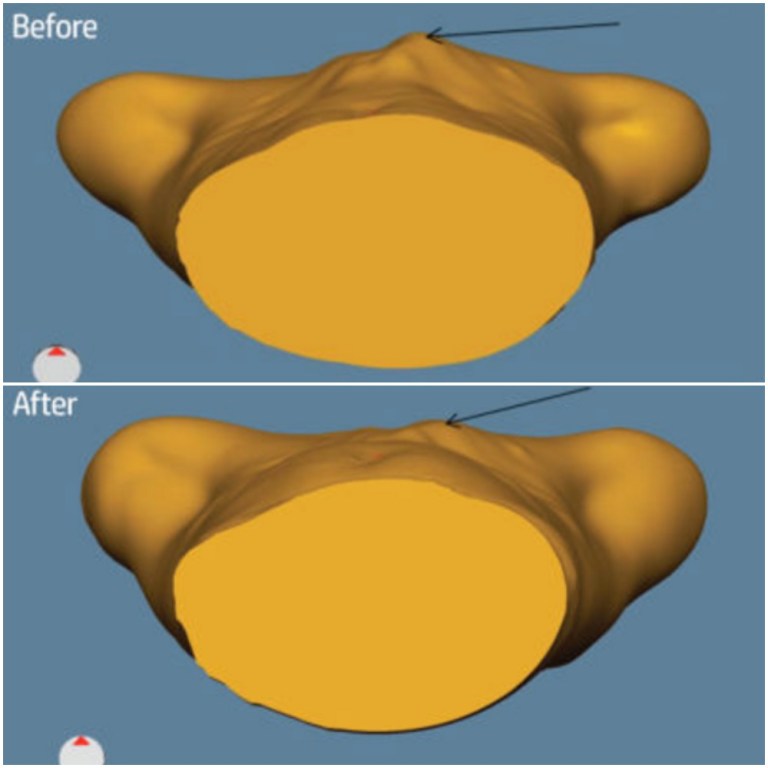
When he was a child, Anthony Cappa was in and out of doctors’ offices for treatment of a tumor on his shoulder.
Following numerous surgeries and the use of corrective body braces, Cappa’s interest in the anatomy and engineering involved in orthotics was ignited.
Now, decades later, he is dedicated to bringing the same help he received to those in need of it.
Cappa is currently working at his own company, Carbon Based, in Mineola, which provides orthotic braces to infants and adolescents with physical deformities. An orthosis is an externally applied device used to modify the body.
Since graduating from New York University’s now-defunct prosthetics and orthotics program in 1984, Cappa has worked in a variety of settings, including a five-year stint as assistant director of prosthetics and orthotics at the Hospital for Special Surgery in Manhattan.
Today Cappa spends his time developing orthotics for infants and adolescents. His Mineola office is unconventional, a workshop space and wall lined with tools for his hands-on work, as well as laser and high-tech equipment for 3D renderings and measurements.
Pigeon breast is a deformity in which the sternum protrudes from the chest cavity. It occurs randomly, its causes still unknown, and it can take years to show. The protrusion is four times more likely to occur in boys than girls and signs sometimes do not appear until puberty, according to Cappa.
In 2016 Cappa patented a design for a brace that essentially presses the protrusion back into the body over time.
“It basically squeezes them,” Cappa said.
Compared to brace designs of the past for pigeon breast treatment, which acted more like a tourniquet according to Cappa, his patent only compresses the breastplate back into place rather than unnecessarily squeezing the ribs and possible damaging internal organs.
Patients, many children and some as old as their late teens, wear the brace for 15 to 20 hours a day for a few months and the protrusion is gone, Cappa said.
Jim Murphy, of Wantagh, said that when his son Kevin was 13, signs of pigeon breast became evident and the family worked with Cappa to correct it. Though the first brace fit, it was an older model, prominent and hard to ignore, Jim said.
It was noticeable even under a shirt, making an already difficult situation worse by harming Kevin’s self-esteem.
With the brace and the protrusion, “it looks like Iron Man,” Cappa said, adding that teenage years are hard for adolescents with deformities, and he works closely with parents to destigmatize the braces and keep things positive.
“That teenage age is brutal, so everything you can do to make that kid look normal is what you want to do,” Cappa said. “Most kids just wanna get along, they don’t want to be the big, unique thing.”
Kevin did not wear the first brace much, according to his father, and his condition remained the same.
After a few years, the Murphys decided to revisit Cappa once more, who had since patented his new, less obtrusive brace. It made all the difference, according to Jim.
“It changed his life,” Jim said. “It gave him the freedom to do what he liked and completely restored his self-image.”
“Its a tough thing to wear at a tough age, so we try a lot of different ways to keep it positive and make it work,” Cappa said. He is now trying to develop a shirt to better conceal the brace.
Cappa also works with patients far younger, helping to shape their lives with his work from infancy.
In 1996, Cappa founded the NiC BAND Cranial Orthosis program, which treats deformational plagiocephaly in infants with a special helmet. When newborns are first introduced to sleeping outside of a mother’s womb, the skull is soft and easily impressionable, leading to deformities while sleeping on a hard mattress, Cappa said.
Parents or physicians notice that a baby’s head is becoming misshapen after the infant spends some time in the crib, which can lead to problems with brain development and other complications later in life, according to Cappa. That is where the NiC BAND program comes in.
The helmet, a hard plastic exterior with foam padding interior, reshapes an infant’s head over the course of several months to correct the deformity, Cappa said. The process is painless, he added, and soon the child’s head is symmetrical and beginning to harden.
Parents, always grateful for his help, will sometimes reintroduce children to Cappa years later, a meeting he said he always enjoys.






